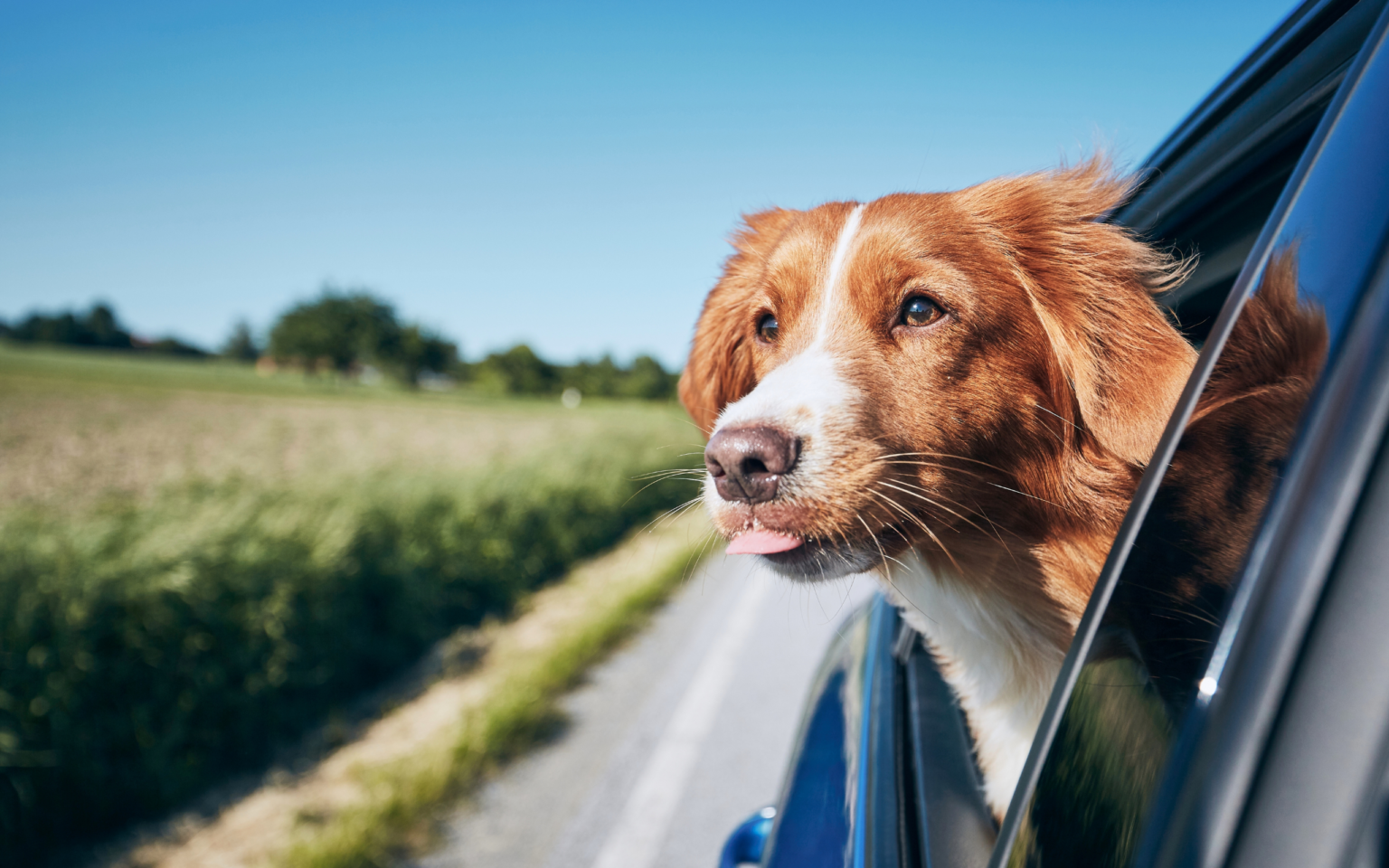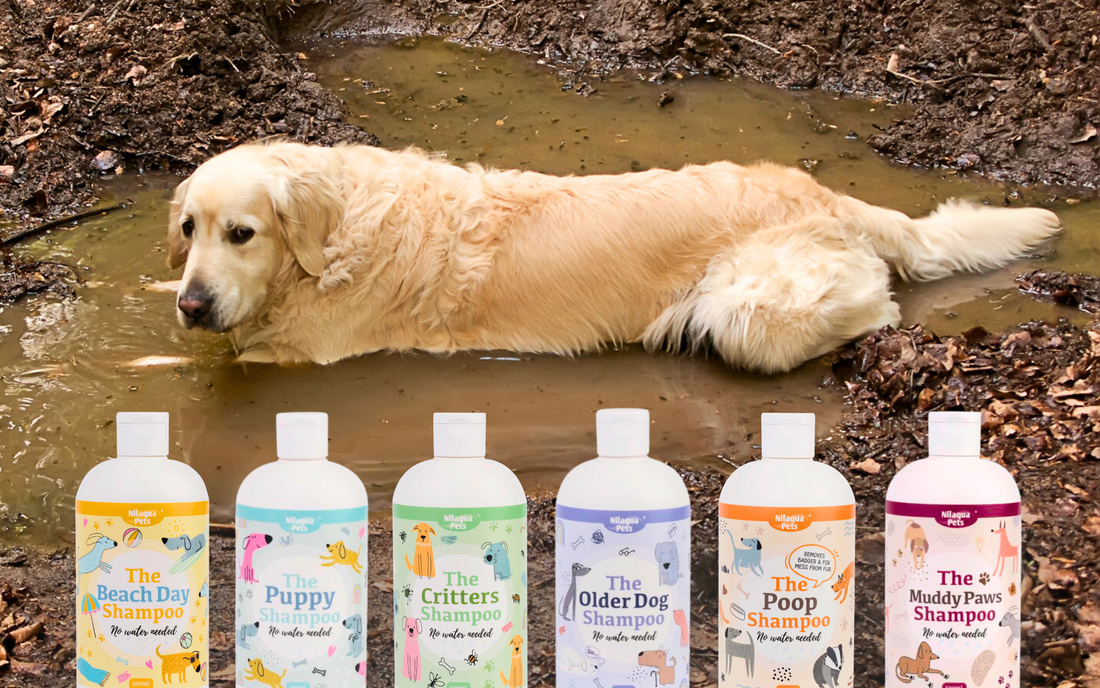Hitting the road with the furry friends
Many of us will be getting in the car heading either to the beach or some tranquil holiday cottages with our furry companions with the good weather and half term break in sight. Before you hit the road, it’s good to ensure you have everything you might need for making it comfortable for your pooch.
The most important aspects of any travels
-
Blanket
Make sure your dog has something comfortable to lie on. Ideally a blanket from home, albeit if your dog is not used to travelling in the car you might want to put a plastic blanket down, which is easy to wipe off should your dog get sick. It’s a good idea to roll down one of the side windows a few centimetres but best avoid blowing cold air on your dog.
You might want to use shades to block out the sunshine to reduce heat and glare from the sun.
-
Motion sickness
The best way to deal with motion sickness is to train your dog well in advance. Ideally, this would start in the early puppy days, which helps to desensitise their uncertainty and get them used to the motion. However, the training can be done at a later stage as well. Start with short journeys in the car, starting with max 10 minutes and gradually increasing it to longer periods over a couple of weeks. Having a positive experience at the end of the car journey will help your dog make positive connections so it’s a good idea to meet up some doggy friends for a nice walk. Having treats at hand in the car can also help. It’s important that you don’t travel with your dog when he/she has just had a meal, best to wait a couple of hours before setting off.
If your dog travels in a crate within the boot of the car, you could put some blankets or sheets on top of it to reduce visual disorientation from looking out of the window. However, most dogs quite enjoy watching out of the window so just see how your dog deals with it before trying to reduce the visibility.
-
Breaks
If you are going on a long journey, take a break every couple of hours unless your dogs are seasoned travellers but nonetheless you should not exceed 4 hours of non-stop driving. A bit of stretching and walking around makes the journey so much more comfortable for both humans and canines. Motorway service stations are not the most dog-friendly places but some offer more greenery and dog-friendly areas than others and it is good to do some research before you hit the road.
-
Space
Assuming your dog travels in the boot, you need to give him/her enough space to be able to stand up, turn around and change position. If you are putting some luggage in the boot, make sure that they won’t fall on your dog, which could be distressing. It’s always better to have a roof box for suitcases and bags.
If your dog travels in the boot, it is also recommended to have a boot gate to prevent your dog from jumping through to the front of the vehicle.
-
Hydration
Most dogs are not keen on drinking whilst travelling in the car. However, you could put a bowl of water in for him (ideally only filled one third), you can even buy non-spill travelling bowls. However, it’s not necessary to do so as long as you make sure that you often take a break and offer fresh water to your dog at every stop.
-
Safety
According to the Highway Code, “a seat belt harness, pet carrier, dog cage or dog guard are ways of restraining animals in cars.” These are the safest ways and you need to choose the method that suits you and your dog the best. Unrestrained dogs can be a distraction increasing the risk of an incident. No dog should ever be restrained by the collar though!
It is not illegal for your dog to travel in the front of the car, however, the passenger side airbag must be switched off and the seat should be moved far back.
Travelling to Europe
It used to be quite straight-forward to travel to Europe with dogs. However, Brexit has changed that and unfortunately, it is now quite an expensive exercise. We have already written a detailed article on all the requirements, which you can access here. However, a summary is included below.
Animal Health Certificate requirements:
- All dogs need to be microchipped
- Be up to date on rabies vaccinations. If not, allow for a minimum of 21 days from the date of the vaccination before travelling to the EU.
- Make an appointment (well in advance) with a vet authorised to complete the necessary checks and issue the Animal Health Certificate. The appointment will last around an hour. The appointment cannot be more than 10 days before you enter the EU.
- Make sure the form is in the language of the intended first point of entry to the EU. Your vet will do this but please double-check it.
- On arrival at the first point of entry in the EU, have the form checked with the dogs if travel beyond the country of the first point of entry is intended.
- Between 24 hours and 120 hours prior to re-entry to Great Britain the dog(s) require tapeworm treatment. On our trip the details of this treatment were entered onto Page 4 of the Animal Health Certificate. This does look like where if you were travelling into Finland, Norway, Ireland, Northern Ireland or Malta the tapeworm treatment would appear but it is the correct place for re-entry to Great Britain too.
- Remember the document only lasts for 4 months from the date of issue for returning your dog to the UK.
- Remember that every time you make a trip to Europe you need a new Animal Health Certificate.
Things to pack for your dog:
- his/her regular food. If your dog is raw-fed, you can either try to source complete raw food abroad or simply buy raw meat and veg from any supermarket and offer him that. For the actual journey, either use a cool-box with ice packs or buy some freeze-dried raw food.
- Don't forget poop bags.
- Treats for the journey and the stay. In order to ensure you can enjoy BBQs and lounge in the garden/beach, it's a good idea to get some long-lasting chews in advance. Remember that buying from us will be much cheaper than buying treats abroad!
- toothbrush and toothpaste. We got great feedback on the Enticers.
The takeaway of Travelling with Dogs:
DOs:
- Secure your pet using a crate, pet carrier or harness
- You can open the window slightly or have the aircon on as long as it’s not blowing directly in your dog’s face
- Either have a bowl of water accessible in the car or offer plenty at stops
- Take regular breaks on a long journey to give your dog the chance to stretch, drink and go to the toilet
- Have some comfy blankets for your dog to lie on
DON’Ts:
- Don't leave the passenger-side airbag on if your dog travels on the front seat
- Don’t feed your dog two hours prior to travel.
- Don’t let your dog stick his head out of the window
- Don’t leave your dog in the car as it can very quickly warm up causing your dog to overheat





